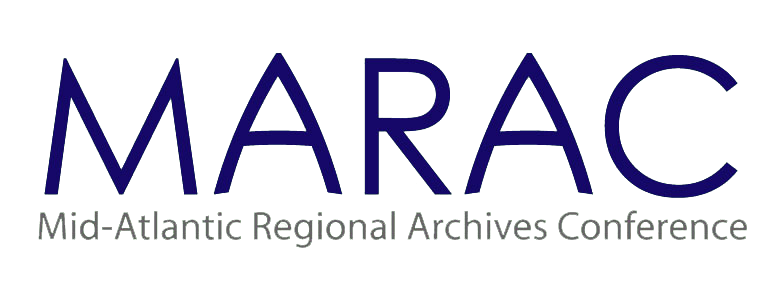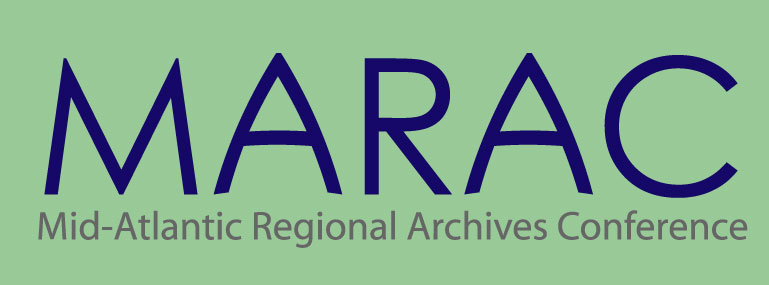MARAC ADVOCACY: LETTERS AND RESOLUTIONS, 2006MARAC Response to NARA Strategic Plan, July 2006 Geoffrey A. Huth, Chair, 8233 Old Courthouse Road, Suite 200, Vienna, VA 22182 17 July 2006 David McMillen Dear David: The Mid-Atlantic Regional Archives Conference (MARAC) has reviewed with interest "Preserving the Past to Protect the Future," the strategic plan of the National Archives and Records Administration. As with all archivists, we believe that the direction of the National Archives affects all archives and archivists, so the profession as a whole has an interest in this proposed plan for the National Archives covering the next ten years. In general, MARAC finds the strategic plan well focused and sound. The document focuses on the key mission of the National Archives and looks to improve operations through improved access to records, the preservation of electronic records, and a keen attention to the needs of customers. We do, however, have a few comments for your consideration. The "First Preserver" initiative (outlined in III.1) will ensure that NARA supports government agencies and public institutions with advice about disaster preparedness for records and ensure that NARA counsels other archives reacting to emergency situations that threaten their records. We fully support this initiative, which we understand is in its first stages of development, and we urge NARA to help the profession review its normal assessment of risk. Although many archives discuss risks to their records and can explain their interest in ensuring the protection of these in the case of disasters, archives (along with other institutions) often unconsciously undervalue the importance of systematic risk assessment, disaster drilling, and general security. We call on NARA to push this initiative forward with the vigor necessary to change the profession from within and to make clear-eyed disaster management a central component of any archives, rather than an afterthought. In the past, archives have learned from records disasters, but this learning has usually resulted in something less than a full-scale reassessment of disaster management in the archives. Under III.3, the plan notes that NARA will solve the challenges of electronic records in government, and the narrative explains that NARA will "work closely with many partners to ensure that this technology is scaleable for use by state and local governments, the private sector, and other institutions." One major strategy to support this goal is missing. The final strategy in such a program must be outreach. NARA needs to express in writing what it has shown in action over the past few years, and it must include a strategy to promote and publicize the value of the Electronic Records Archives once it has been developed. Under III.4, the plan addresses the need to provide prompt, easy, and secure access to NARA's holdings. The measurements in this case may require greater specificity. It seems to us that NARA must consider the changing pressures (or diminution of same) on onsite access to records at its facilities across the country. NARA will also need to re-evaluate the online user experience as it gains more experience with managing access remotely. Finally, NARA must consider how to evaluate online transactions with increasing sophistication. The number of raw hits will no longer be an adequate measure. NARA will also need to develop means of distinguishing brief versus extended use, even if that use takes place offline in a researcher's home or office. If archives in general do not determine how to measure remote use adequately, the validity of their mission may be called into question by the administration of the archives' parent organizations. MARAC looks to NARA to provide guidance in this area. Under III.6, the plan discusses the need to equip NARA to meet the changing needs of its customers. The strategies supporting this goal are all appropriate but none appears to address the customer directly. The strategies suggest the modification of NARA's culture and the development of necessary skills to support customers. But these do not lay out a methodology to develop an understanding of NARA's customer base, which we see as especially important in this time of great changes in that base. One general comment about this plan is that its measurements are usually incomplete. By this, we mean that the measurements of success generally list goals but do not list specific timelines by which these goals will be met. For instance, in IV.2.9 the plan notes that the National Archives will improve storage, preservation, and collections security by measuring the percent of archival holdings at risk. Specifically, the plan lists two measurements: backlog of at-risk holdings and cubic feet of holdings treated. These measures, however, are not truly measures since they include no specific goals. For these to be useful goals, the National Archives must note what percentage or quantity of the backlog of at-risk materials will be treated, either per year or by the end of the decade covered by this plan. In the absence of such specific measurements, the National Archives will not have the ability to express with confidence that it has met its goals unless the entire backlog of at-risk holdings is eliminated. Such incomplete measurements are common in this document and will prove unhelpful if not made more concrete in the final document. Since this plan is a public document, MARAC suggests one small change. The document contains a fair number of undefined acronyms that are opaque to the general user, but also sometimes unfamiliar to archivists outside of the federal system (for instance, "ISOO," "PRA," "COOP"). To make this document as accessible as possible, without diluting the professional focus of this document, MARAC suggests the NARA ensure that all such terms are clearly defined in the document itself. MARAC has one final suggestion and an offer. Our suggestion is that NARA focus great attention on how to make archives public spaces that people visit much as they would a museum. With its Public Vaults, NARA is in the forefront of this change in the profession, a transformation that can serve simultaneously to increase the visibility of archives and to ensure that our public facilities do not become underused while much reference activity moves to the Web. Finally, MARAC is the regional archives association with the most NARA staff as members. Our organization covers the eastern coast of the country from New York to Virginia, which includes many of NARA's large facilities as well as its central offices. Given our geographical proximity and our strong membership of government archivists, we believe we are in a good position to cooperate with NARA on projects of mutual benefit. We offer our time to that end and to the good of the profession. Sincerely, |

